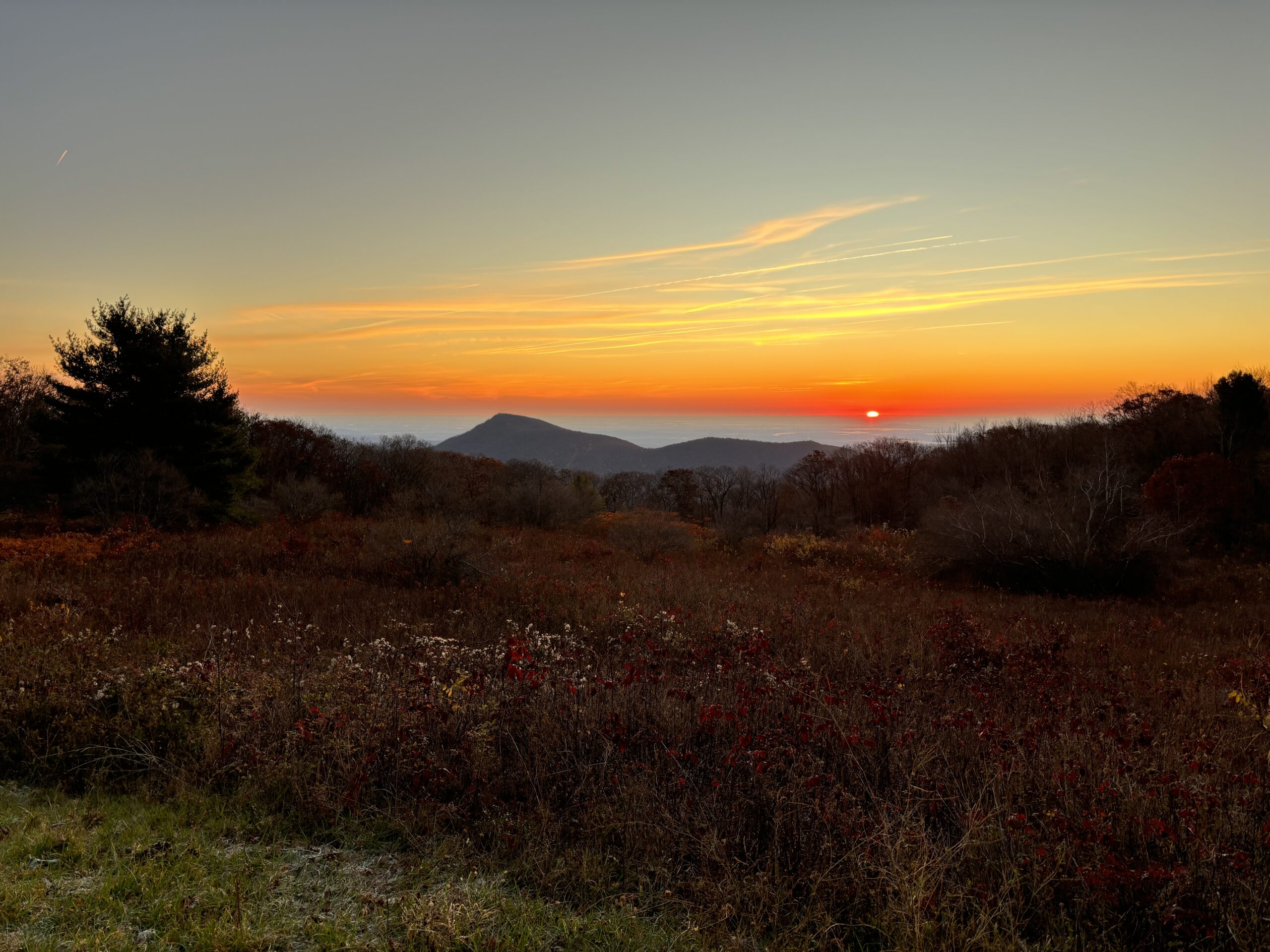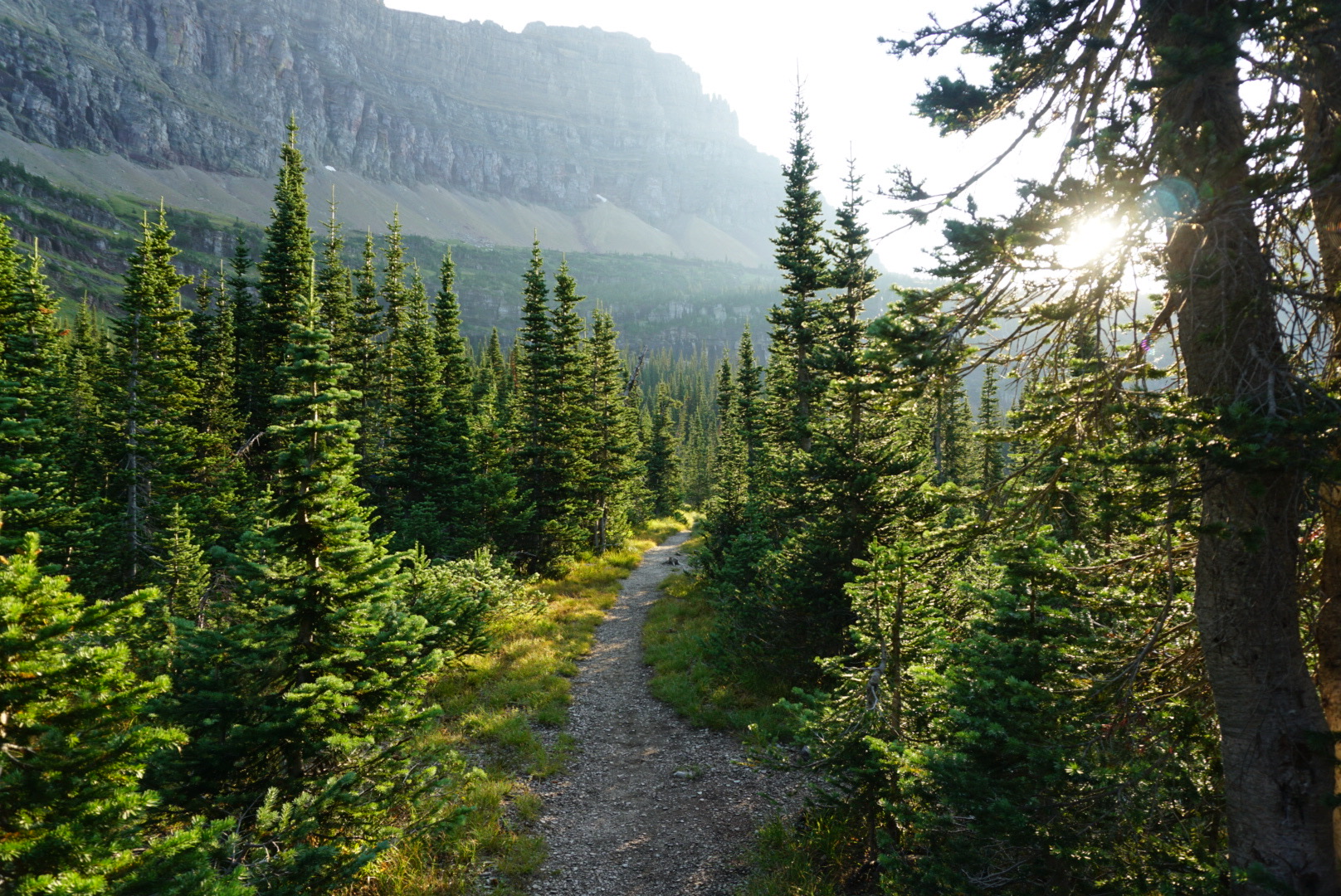Hiking is for everyone
Hiking is one of my favorite activities. The physical challenge is exhilarating and the mental peace from the fresh air and beautiful scenery is like no other. I love traveling to see new parts of the world and nothing beats seeing mountain views in person. You can read more about how I fell in love with hiking in my hiking journey blog post. While this is slightly outside the realm I normally write about, I want to share a guide of practical hiking tips and advice that I’ve learned along the way. Nature is healing to me, exercise is an important part of a healthy life, and hiking is the perfect combination of these two things. If you’re feeling stressed or not sure how to build more exercise into your life, I would encourage you to give hiking a try.
If you’re new to hiking, there are no “requirements” to call yourself a hiker! You don’t need a special backpack, special clothes, or special snacks. If you’re out walking on a trail, you’re a hiker. I hope this post will be something you can return to over time when you need new or upgraded gear, not something that’s presented as “must-haves” before you can even go out on the trail. I should also mention that we are day-hikers, not backpackers, so your gear will look different if you’re planning to spend a night or more on the trail.



How to plan for a first hike
Maybe this seems trivial because the internet has made it really easy to find hikes nearby. But I still want to share how we plan our hikes. We are very familiar with our local metro parks, state parks, and national parks nearby (and lucky enough to have all three within less than an hour’s drive!). If you’re not familiar, I would start with an internet search for “metro parks near me” or “state parks near me” and see which are closest.
Each park should have a website with trail maps. These maps will show you where the trail starts and ends, how long it is, how much elevation gain to expect, where parking lots and restrooms are, etc. If you’re new to hiking, I would recommend starting out with a one to three mile hike with less than 200 (if it’s a one mile trail) or 500 (if it’s a three mile trail) feet of elevation gain.
Planning for an out of state (or country) hiking trip
For hiking trips or vacations, we have a much more extensive planning process! We usually start with the destination, which is typically a national park or a specific state or country. You could also start with flight or hotel deals and book everything else around that.
Once you’ve chosen a place to visit, it’s important to research the park system you will be hiking in. Some popular national parks have reservation or even lottery systems to get into the park or on a specific trail. You can sometimes get around those systems by going to the park during off-hours, but it can be difficult.
For instance, when we traveled to Glacier National Park in Montana we had to purchase reservations for different areas of the park. We had to plan our hikes in advance and by section so it worked with our reservations. We got the reservations we wanted in the order we wanted, but all the reservations were gone within 5 minutes of opening! It turned out we didn’t really even need the reservations because we got to the park before they were required. But I was glad we had them anyway in case our timing was off. Fast forward to our recent trip to Banff and we did not research the national park system early enough. We were looking at 2AM wake-up calls to make it to our trailheads in time to snag a parking spot. Luckily we were able to get shuttle passes the day before our planned hikes, but it wasn’t guaranteed.
Once you’ve picked your place and understand the reservation or lottery system, it’s time to choose your hikes! We like to use a combination of Instagram, the National Park or State Park website, AllTrails, and travel blogs to compile a list. Once we have the list, we’ll look through them one by one writing down the mileage and elevation gain. Then we will look at photos of the hikes on our list and rank them green (must-see), yellow (if time allows), and red (doesn’t seem worth it) based on how the photos look. Once we have a rough itinerary, we put them in an order that makes sense based on location and difficulty. Then we book the rest of our trip like flights, rental cars, hotels or Airbnb’s, and finalize our plans for getting the hiking reservations we want, if required.
Safety first: navigation options
Once you have a plan, safety should be top of mind. The first thing to think about is how YOU will know where you are. Whichever navigation option you choose, make sure you have a way to navigate without cell service. One option is to use a paper map (or a screenshot of a paper map on your phone). You will need to know how to read trail signs and markers if using a paper map. Typically there is a symbol and/or colored trail marker on signs and trees along the trail so you know you are on the right path. In the case of trail intersections, it also ensures you choose the right path forward. This is usually the option we choose for local trails, even if we are not familiar with them.
The second option is to use navigation on your phone. Occasionally Google Maps will show hiking trails, but I would highly recommend AllTrails. We used the online version of AllTrails (unpaid) in addition with paper trail maps for most of our national park trips and never had any issues. We purchased the offline (paid) AllTrails app when we decided to take a trip to the Adirondack mountains. Because the Adirondack mountains are dense and not a national park or as populated, we wanted to be sure we were on the right trail. I am so glad we bought AllTrails! It is accurate, works with your phone on airplane mode, does not drain your battery, and alerts you by sending a notification if you’ve made a wrong turn.
We continue to pay for AllTrails and now use it on all of our hiking trips. It’s an added layer of security as we become more experienced and explore new and more difficult trails across the globe. If you’re going with a phone navigation option, make sure you have a charging block and cord just in case. I’d also highly recommend downloading offline maps through Google Maps so you can get to and from the trails without issue.
Safety first: communication options
The second hiking safety tip is related to how OTHER PEOPLE will know where you are. I personally don’t prefer to hike alone, so having my husband or a friend with me is one way I hike safely. However if you are going out on a hike by yourself, or even in a new place with someone else, make sure someone knows where you are! Even if I am going out for a walk around the neighborhood or to the park by our house by myself, I make sure to let my husband know where I’m going and when I expect to be back. When we travel somewhere new, usually our parents have our itinerary so they know which hikes we are going to tackle each day.
If we’re hiking close to where we live, cell service is usually not a concern. However, on most of our trips we take, we don’t have cell service. We have always been cautious previously and made sure we had our plans laid out as best as possible so someone knew where we were, and we knew how we were going to get back. For Christmas last year, we asked for a Garmin InReach. We set it up for the first time for our two week trip to the Canadian Rockies. This is just an extra layer of security in case we someone else on the trail needs it. The great thing about the Garmin is that you can turn the subscription on only when you need it to avoid paying year-round.
Prepare for the uncontrollable: weather
There are many things we can’t control, but should be prepared for while hiking. The first uncontrollable is weather. The most obvious tip is to check the weather before you leave. Is it snowing, sunny, or raining? Make sure to bring the right gear for the right weather. Even if your weather app says it’s going to be sunny all day, know the area you’re in. It’s not uncommon for storms or rain to sneak up in the mountains in the afternoon. Maybe it’s worth bringing your rain jacket anyway. If you’re traveling out of town for a hike, make sure to bring everything you might need. You never know what the weather is going to be like when you get there!
Prepare for the uncontrollable: wildlife
The second uncontrollable is wildlife. The wildlife you may be exposed to on the trail is different depending on the area you’re hiking in. Ticks are a major concern in Ohio so when I go on local hikes, I make sure to wear long pants, avoid walking through tall grassy areas, and check for ticks when I get home. In Montana and Canada, grizzly bears are a larger concern. In Brazil, mosquitoes and malaria are a larger concern. Before you go on a hike, familiarize yourself with the wildlife you might encounter on the trail. Know the best tactics to avoid dangerous wildlife encounters. Make sure you have some form of protection like bear spray or whatever you feel most comfortable with.
Prepare for the uncontrollable: medical emergencies
The third uncontrollable is medical emergencies. Now obviously we have a little bit of control over this through the gear we carry and making plans to avoid overexertion or dangerous situations. But there is always the possibility of making a mistake or coming across a dangerous situation that you did not expect. It’s always better to be prepared and not need your preparations, than to not have what you need in a dire situation.
If it’s a short local hike we generally are not carrying a full first aid kit. Any hike over approximately 5 miles even if we’ve done it fifty times, we carry a first aid kit. Our first aid kit contains: gauze, bandages of various sizes (including blister bandages), tourniquets, pain reliever, antiseptic, scissors, and hydration packets. These are what I would consider the essentials. Regardless of how environmentally friendly they are, I’d much rather be prepared and be able to mitigate a dangerous situation or injury than not have anything to help.
Essential hiking gear: clothing
My very first hike I wore leggings, bright purple running shoes, and a quarter zip. I carried a cross-body purse and a water bottle. Hiking doesn’t have to be an expensive hobby; you can build up your gear over time as you need it. Let’s go through your day hiking essentials.
When I go hiking today, I primarily wear long pants, either leggings or hiking pants. Our hikes are typically in the mountains where it is cooler, or I want to protect myself from ticks, minor scrapes from rock scrambling, or the sun, so long pants make the most sense. If it is extremely warm out, I’ll either zip off the bottom part of my hiking pants or wear cropped leggings or biker shorts. I usually wear an athletic t-shirt or tank top, along with an athletic quarter zip long-sleeve or long-sleeve hiking shirt. There’s nothing special about any of these clothing brands. I mostly purchased my clothing a while ago (high school/college) or during a sale at REI. One brand I love is Smartwool hiking socks, but really any socks will work.
If it’s really cold, I might wear fleece lined leggings in addition to hiking pants, a sweatshirt along with a slim but warm puffer coat, as well as a winter hat and gloves. It’s important to have layers, particularly if you are completing a hike with significant elevation change as the weather can be very different at the top of a mountain compared to the base. I also always bring my rain jacket, just in case.

Essential hiking gear: footwear
While you can certainly hike in any type of sturdy shoe, if you’re hiking a longer distance I would recommend investing in trail running shoes or hiking boots. My personal preference is hiking boots (Keen is my go-to brand) because it gives me additional ankle stability. Many people in the hiking community are transitioning to trail runners as they are more lightweight and agile than boots. Regardless of which option you choose, you want your shoes to be comfortable and have good traction.
Essential hiking gear: water
The last item I would consider a necessity is water. Make sure you are carrying enough! The most general guidance is to ensure you have one liter every 5 miles, or one liter every 2 hours. If you are new to hiking, bring more than you think you need. As you become more experienced you will have a better idea of how much water you personally require for various distances and temperatures.
When I started hiking, I would carry a small water bottle when it was warm out. I slowly upgraded to a one-liter water bladder in my pack, and now to a 2.5-liter Osprey water bladder. I don’t use my water bladder on every single hike, but use it any time it’s warm out or if we are doing a lengthy hike. It helps to ensure I’m drinking enough water throughout the day as I don’t have to stop to grab my water bottle from my pack first.
Extra hiking gear: hiking pack
You don’t necessarily need a hiking pack to start with, especially if you’re going on shorter hikes and you don’t have much to carry. I will use a small fanny pack for short hikes, and a 24-liter Osprey day pack for longer hikes. The larger day pack gives me plenty of space for everything I need for a day hike. It also gives me space for my water bladder which is essential for me on long hikes.
Extra hiking gear: snacks
You don’t necessarily have to bring snacks, but if it’s a long or difficult hike (5+ miles, or 2+ hours), I would highly recommend it. Some of our favorite hiking snacks we like to bring on the trail:
- Trail mix (nuts, dried fruit, chocolate)
- Fresh fruit (apples, bananas)
- Dried fruit (Solely dried fruit is a great single-ingredient brand; you can also make your own!)
- Jerky (Epic brand is our favorite)
- Granola bars (Kate’s Real Food is my favorite brand, but we also like Lara Bars)
- Protein bars (Rx bars and GoMacro bars are great, but we also like to try new and different brands when we hike)
- Electrolyte mix (Relyte is our favorite brand)

Extra hiking gear: accessories
- When we are hiking in bear country, we use a bear canister to keep our snacks in. It’s a simple addition to our hiking supplies that keeps the food smells contained. This helps to prevent unwanted bear encounters on the trail!
- Toilet paper is another extra that we bring on longer hikes, just in case we need it. If you bring toilet paper, make sure to bring a bag for the used toilet paper! Anything you bring into nature you must take out with you. I know it’s a little gross, but it’s important. Pack it in, pack it out!!
- While I have not used this, a Kula cloth is another option. It’s a reusable, anti-microbial pee cloth and a great option to be environmentally friendly.
- Trekking poles are another optional accessory. I do not use them on every hike, but for hikes over 10 or so miles, I will typically bring trekking poles with me in case I want to use them. I also used them on every hike I did with a sprained ankle in the Canadian Rockies. Trekking poles help provide added stability and help take some of the pressure off your joints when going uphill and downhill. To be completely transparent, I thought they were only for older people that wanted to keep hiking. However, I’ve found them to be really helpful too!
Extra hiking gear: protection from the elements
- At higher elevations, the sun will be more intense. I typically wear a hat and bring sunglasses to protect my face from the sun. This is particularly important if the trail is relatively exposed without much shade.
- We also always bring sunscreen to protect ourselves from the sun. While many sunscreens have poor ingredients, we primarily use mineral sunscreen. I try to protect myself from the sun with a hat and long-sleeves, but if it’s extremely warm, I will remove my layers and use sunscreen instead.
- Lastly, bug spray. Typically bug spray contains ingredients I am not comfortable using, like DEET. There are some more natural methods out there, but I have yet to try them. I normally don’t have too much of a problem with bugs while outside. One exception is Biscayne National Park where my husband and I were both getting eaten alive by mosquitos! In that case, I’m going straight to the strongest DEET bug spray.
Where’s your next hike?
While all of the above are important, I will leave you with my top two hiking tips.
- Leave No Trace. Respect nature. If you pack it in, you must pack it out. Leave places better than you found them. We all must do our part in keeping nature pristine for future generations. I want my future children to be able to see some of the same beautiful places that I have visited, so I make sure to do my part in keeping nature preserved.
- Enjoy yourself. Allow nature to restore you. There will be challenges, but the more you overcome, the better hiker you’ll be.
Where’s your next hike? I’m looking forward to sharing our next hiking trip in the first half of next year!








